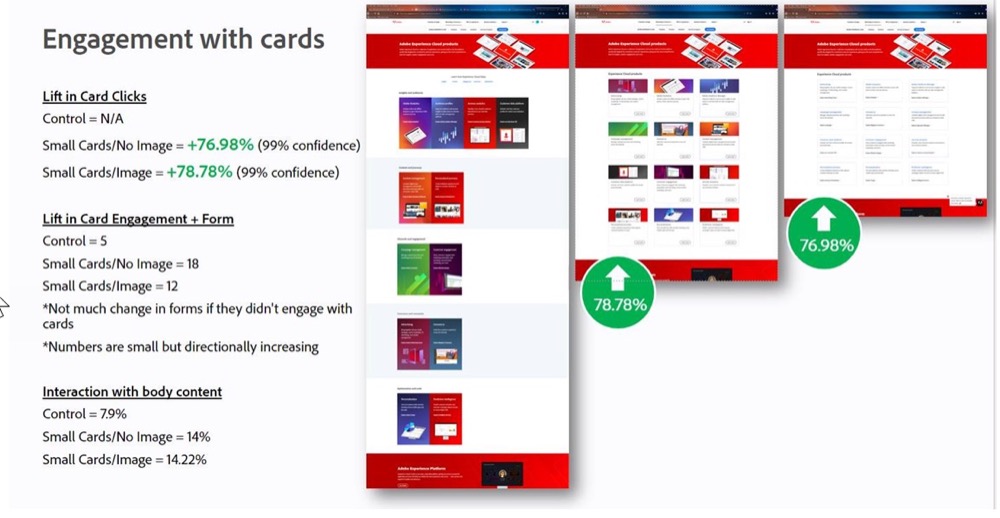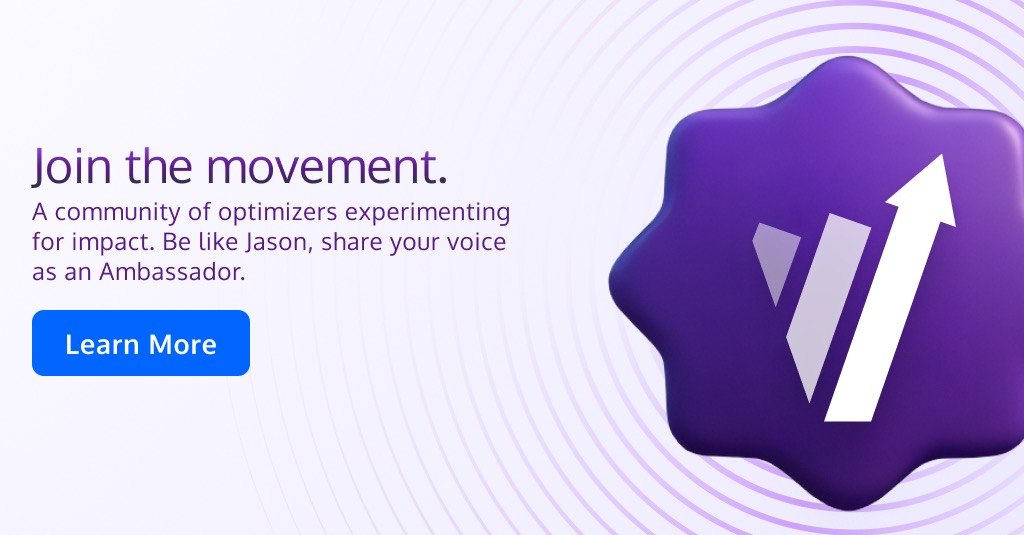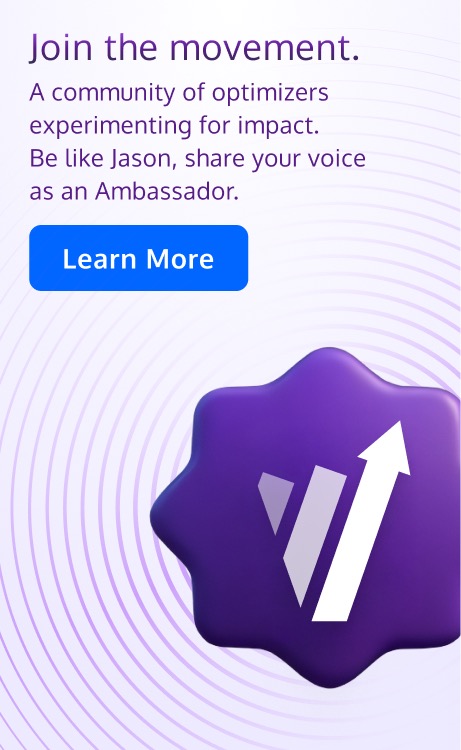Conversion Thinking: The Business Advantage of a Culture of Experimentation
In Shakespeare’s play Henry V, Henry is with his men, and they are outnumbered by the French. It’s the famous battle of Agincourt. A man comes rushing in and tells Henry that the French are set and ready to march. Henry replies, “All things are ready if our minds be so”.
I love this line. It’s an often-forgotten part of strategy. You can have the right team, the right software, the right timing, the right resources, but forget that how you think about the challenges and approach them is a major part of the battle.
I have done conversion optimization for many years and have helped many clients, like REI, FedEx, Delta, Marriott and others, with their programs, both existing and new. I have developed a maturity model that encompasses many characteristics of a mature program.
One of the most important indicators of a successful program is the mindset. And this mindset may start in one person, but it needs to filter into the whole organization. I call this Conversion Thinking.
What Is Conversion Thinking?
- It’s an experimentation mindset. It’s not that you just test things, but that you are curious, willing to be wrong, asking “what if” and experimenting for discovery, innovation, exploration and research. You challenge the status quo.
- It gets instilled into your organization’s culture. This is not a natural mindset for many people, especially in business. We have been running businesses for so long on the opinions of people in authority. So it’s going to take some education, some evangelization, some data, some training.
- You apply this mindset and approach to your business strategy. Experimentation is not just a nice-to-have; it’s a differentiator. It’s not just a tactic that one team owns; it’s crucial to your innovation and ability to adapt. It’s like R&D for your marketing.
- Finally, all of this is done through a lens of customer centricity. You are looking to constantly understand and figure out what your customers’ pains, needs and wants are. After all, this is why your business exists.
Why Do Most Companies Get It Wrong?
They view conversion optimization the wrong way. Most of the time, they think it’s just a validation step. It’s there to test the ideas that someone comes up with and see if they work. When this happens, it’s becoming just a step you take before shipping a new feature.
They don’t know it, but their biases have crept into the process. Instead of experimentation guiding and teaching them, they are steering and guiding experimentation towards confirming their biases.
Another way it manifests itself is what is sometimes called “optimization theater”, where the program is going through the motions, test velocity is high, and reporting to the team and executives is about the number of tests run in a certain amount of time. Or a heavy focus on win rate. Experimentation becomes this machine that just pumps out tests, with little focus on proper results.
What It Looks Like In Practice
It permeates the whole organization, from SEO to paid search, to demand generation teams and email marketing. The focus becomes: How do we challenge what we are doing in a way that further helps us understand our customers and is in line with our strategic vision? How can we learn as we go through our campaigns and find information that challenges our assumptions and opinions?
Here are some indicators that the culture is adopting Conversion Thinking:
- Learnings are shared across the organization
- Failure and risk are safe
- Curiosity is rewarded
- Different teams understand the purpose of experimentation
- Results, learnings, wins and losses are talked about publicly
- It’s getting integrated into the product or marketing planning cycles
- Data is informing decisions, not opinions
- Processes are outlined and followed for intake, ideation, development, etc.
- Cross-functional collaboration is happening
- Test ideas come from across the company and they are well informed with customer centricity and data
- You don’t hear phrases like “this is a no-brainer, just do it”, “we already know what works”, “this is a best practice, just implement it”.
I have seen this firsthand, running a program at Adobe. At first, creative teams felt like testing was an obstacle or an interruption to their daily tasks. It was a nuisance.
Over time, as the culture shifted and we had good results and communication, the whole organization—from creative, to copywriting, to product management and so on—planned experimentation into their workflows and they welcomed the learnings they would get from it.
For example, we had a page that showcased all the products; it was necessary content. It was a fairly long page, and as you would expect, the further you had to scroll the more people dropped off. I brought this problem to the UX/UI team. The goal was to increase engagement and somehow bring this important content up into a viewable area of the page.
In the past, they would have spent cycles researching and coming up with a single solution to implement. But now that we had testing, we were able to work up 2 different alternatives based on their knowledge and research.
The goal was to get people to interact with the product content and go to the next page. The UX/UI team relished the idea of trying different UX patterns to compare with the default. They didn’t have to research and finally rest on just one idea. They had their own hypotheses and they put them to the test. The fun result was that both challengers were better than the control. Engagement for both designs was up dramatically as they found a way to move more of the content up on the page.
It helped them to learn what worked and apply that to their designs going forward. They were eager to put other ideas that they had into testing, because it made them better designers.
How to Do It?
A culture shift like this doesn’t happen overnight. It’s not a light switch you can flip and say “Voila! We have a culture of Conversion Thinking.”
First, you have to want to change. Create the desire by everyone to break through the current level and find a new, higher level to operate at.
Second, the executives and leadership need to instill and drive the mindset into the organization. They don’t have to be experts, but they can explain and sell the vision. They remove obstacles, they hold teams accountable, they reward certain behavior, they provide high level strategy and meaning.
Then you start to audit and assess where you are at, you set goals for improvement, not just results in wins and higher revenue, which of course is the goal, but in cultural shifts, better collaboration, innovation.
Once the vision is set and goals are set, then you start to train and educate your team. You make sure that the right people, with the right skills, are sitting in the right seats.
I went onsite with a famous, large ecommerce brand and we assessed and evaluated their experimentation program. We interviewed and talked with about 30 people who touched the program at some level. After the assessment, we made our recommendations on processes, governance, strategy, communication, etc. The organization moved people around from one team to another to facilitate a better culture of experimentation, resulting in a more streamlined and aligned team. When Conversion Thinking starts to embed in the culture, things like organizational structure, responsibilities and roles may change to facilitate experimentation.
Why Do This?
It’s a force multiplier. If you have the right mindset, you can increase the output without increasing the team or other resources. It becomes a way to pack more punch into the actions of every team.
It’s a strategic advantage. In your industry landscape, many of your competitors have similar products and similar messaging. You’ll often find that they are all saying the same thing. Conversion Thinking as part of your strategy is going to help you innovate and find new ways to connect with your target audience. Never being satisfied with the status quo and the same old marketing tactics.
It’s a way to adapt to changing environments. So many companies have fallen by the wayside because they don’t read the landscape and see trends and shifts in their industry. We know so many stories of companies who died because they scoffed at the new wave hitting their market. An ongoing experimentation program helps you course-correct constantly.
Having Conversion Thinking embedded in your strategy and culture is going to allow you to adapt and overcome shifting landscapes, changing customer behavior, new competitor threats and other unknowns lurking around the corner.
Written By
Jason Haddock
Edited By
Carmen Apostu



